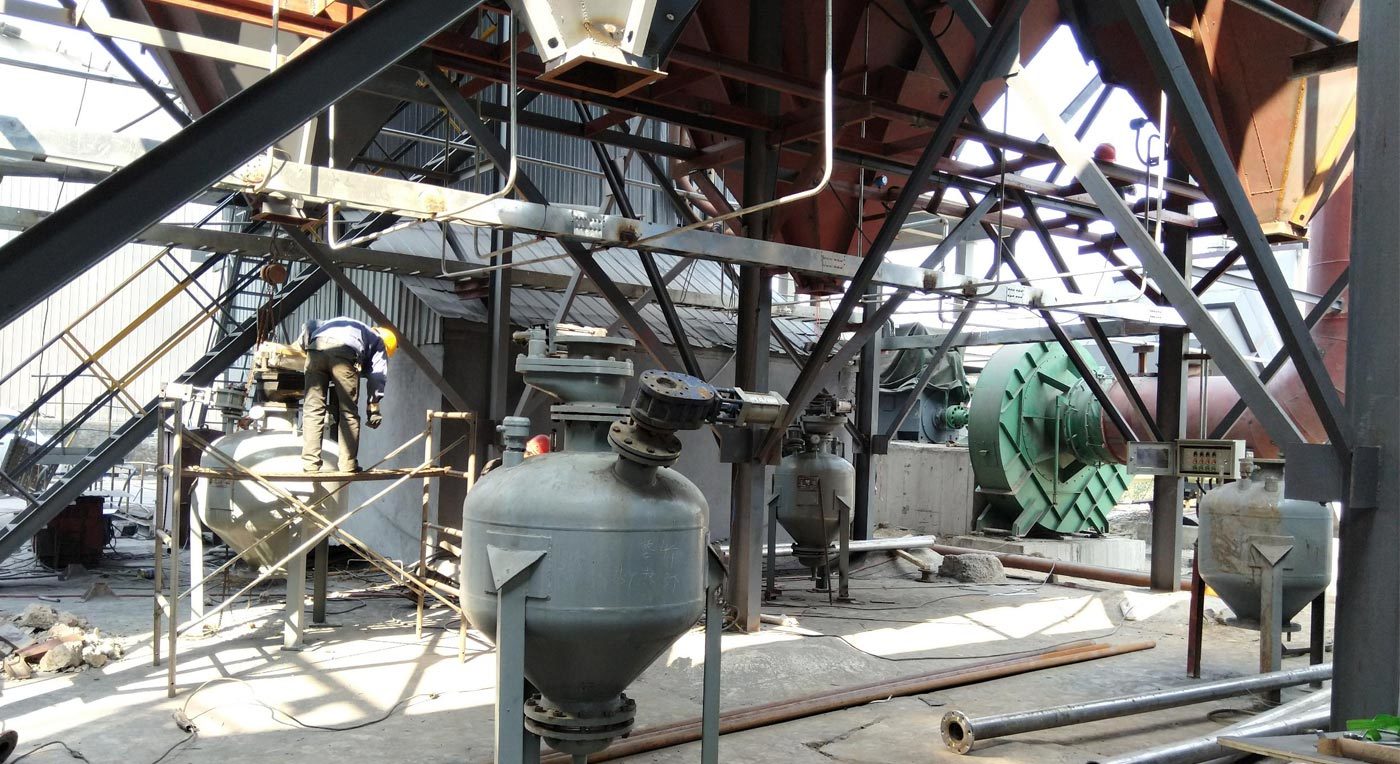Analysis of why pneumatic conveying can not be used for long-distance conveying temporarily
Time:
Mar 15,2023
Analysis of the reasons why pneumatic conveying can not be used for long-distance transportation for the time being. Pneumatic conveying, as the transportation of bulk materials, has been used abroad for many years, because it has many unique characteristics, such as high transportation efficiency, simple structure of machinery and equipment, convenient maintenance and management, convenient automation and beneficial to environmental protection, compared with conventional mechanical transportation and vehicle transportation. Therefore, it is widely used in the unit operation of loading, unloading, storage and transportation and powder engineering in the fields of thermal power, steel smelting and cement. Secondly, with the increasingly stringent national environmental requirements, the continuous improvement of industrial dust environmental pollution will greatly promote the continuous development of the pneumatic conveying industry.
From its appearance to wide application, pneumatic conveying has gone through the exploration and transformation from dilute phase to dense phase, which has enhanced the continuous development of pneumatic conveying. In terms of the current research on powder pneumatic conveying at home and abroad, most of them are still focused on short-distance dense phase pneumatic conveying, mainly in order to better deal with the problem of short-distance pneumatic conveying within or between factories. For long-distance pneumatic conveying systems up to dozens of kilometers, such as the pneumatic conveying system for ash removal in power plants, in view of the technical limitations, they often take the form of multi-level relay or system series connection. However, under the conditions of limited construction site conditions or inconvenient land acquisition, long-distance pneumatic conveying is still relatively inconvenient. The two primary factors affecting long-distance pneumatic conveying of powder are energy consumption and stability. Now let's focus on these two points by the small editor of pneumatic conveying.

Bin pump
1. Steady
The apparent gas velocity of long-distance pneumatic conveying increases continuously along the pipeline, and the flow pattern of gas-solid two-phase flow will also change. When the conveying gas velocity is reduced beyond the limit of dense phase steady-state transportation, an unstable dune flow will be formed. Its characteristic is that the pressure fluctuation is strengthened, the conveying gas velocity is continuously reduced, and the material will deposit along the pipeline until the pipeline is blocked. Therefore, it is of great significance to explore the stability of powder pneumatic conveying so that the conveying system can maintain a stable condition for long-distance pneumatic conveying.
2. Energy consumption
Energy consumption is the power consumption (pressure drop) in the pneumatic conveying process. Reducing energy consumption can reduce the pressure drop per unit conveying length and increase the conveying distance. The pressure drop of pneumatic conveying is related to many factors, among which the complex and changeable is the characteristics of conveying materials. The pneumatic conveying regularity of various kinds of powder, particle size and water content is different. For the same kind of powder, particle size, distribution and water content are the primary factors affecting the fluidity of powder. The smaller the particle size, the wider the distribution, the higher the moisture content, and the worse the fluidity, the more inconvenient the pneumatic conveying.
In the long-distance pneumatic conveying pipe, the movement of solid particles is not only rolling but also suspension. In addition, there are collisions between solid particles and solid particles, solid particles and wall surfaces, and solid particles rotate to form lifting force. Considering these problems thoroughly, it is very complex.
Pneumatic conveying
The double casing pneumatic conveying system was originally designed to better deal with the blocking problem of long-distance transportation of fly ash in the power industry. Its transmission pipe has a unique structure, which can ensure that the pipeline is not easy to block in the transportation process, and improve the safety and reliability of powder transportation. A small pipe with an opening is arranged in the gas transmission pipe, and the opening spacing is related to the transported materials. When the deposition of powder in the conveying pipe is too high, the air flow will flow preferentially from the small pipe, and gush out from the next hole at a higher gas velocity, scouring the leeward side of the deposited powder, reducing the height and length of the powder deposition
Degree, so as to ensure the normal transportation of powder.
The reason why the powder can be transported is that it has the characteristics of flow to a corresponding extent, and the reason why it can block the pipeline is because of the deposition caused by the poor fluidity. Therefore, the good fluidity of the powder is very important for the smooth transportation. Fluidization is a process requirement that makes the solid particle layer contact with the gas or liquid phase between them, and then convert it into a condition similar to the fluid, so as to be beneficial to the flow of granular materials.
Fluidization silo pump is a kind of feeding device designed by fluidization principle, which is beneficial to the long-distance transportation of powder. The discharge port is located in the center of the upper part of the fluidization plate, and the silo pump body acts as a mixing chamber. When the silo pump works, the compressed gas from the lower chamber makes the conveying powder in the fluidization state through the fluidization plate, and the conveying powder and air are fully mixed before entering the gas transmission pipe, so the accelerated pressure loss of gas-solid two-phase flow entering the pipeline is eliminated; In addition, the fluidization condition of sufficient mixing makes the powder evenly distributed in the transported gas, reduces the probability of deposition blockage, and is beneficial to the long-distance transportation of powder.
Relevant News
MAIN PRODUCTS
CONTACT US
ADD : Zhangqiu District ,Jjinan City, Shandong Province
E-mail : candra@sdyinge.com
TEL : +86 18853147775
PROVIDE YOU WITH FREE SOLUTIONS











